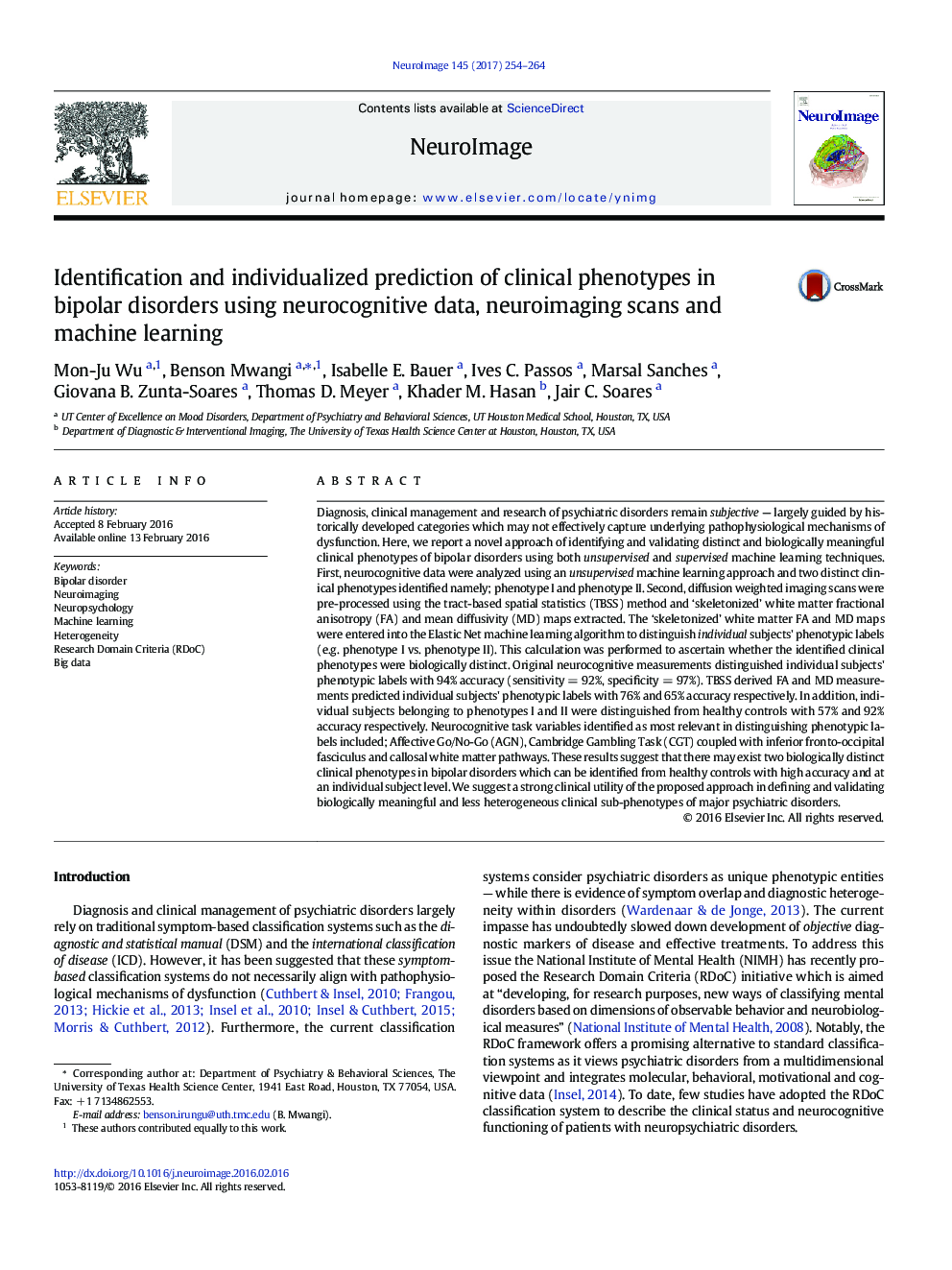| کد مقاله | کد نشریه | سال انتشار | مقاله انگلیسی | نسخه تمام متن |
|---|---|---|---|---|
| 5631577 | 1406499 | 2017 | 11 صفحه PDF | دانلود رایگان |
- An unsupervised machine learning method and neurocognitive data used to identify two phenotypes
- LASSO distinguished two phenotypes using neurocognitive data with 94% accuracy.
- Elastic Net validates differences of the two phenotypes using FA data with 76% accuracy.
- Healthy controls are further used to validate differences between the two phenotypes.
Diagnosis, clinical management and research of psychiatric disorders remain subjective - largely guided by historically developed categories which may not effectively capture underlying pathophysiological mechanisms of dysfunction. Here, we report a novel approach of identifying and validating distinct and biologically meaningful clinical phenotypes of bipolar disorders using both unsupervised and supervised machine learning techniques. First, neurocognitive data were analyzed using an unsupervised machine learning approach and two distinct clinical phenotypes identified namely; phenotype I and phenotype II. Second, diffusion weighted imaging scans were pre-processed using the tract-based spatial statistics (TBSS) method and 'skeletonized' white matter fractional anisotropy (FA) and mean diffusivity (MD) maps extracted. The 'skeletonized' white matter FA and MD maps were entered into the Elastic Net machine learning algorithm to distinguish individual subjects' phenotypic labels (e.g. phenotype I vs. phenotype II). This calculation was performed to ascertain whether the identified clinical phenotypes were biologically distinct. Original neurocognitive measurements distinguished individual subjects' phenotypic labels with 94% accuracy (sensitivity = 92%, specificity = 97%). TBSS derived FA and MD measurements predicted individual subjects' phenotypic labels with 76% and 65% accuracy respectively. In addition, individual subjects belonging to phenotypes I and II were distinguished from healthy controls with 57% and 92% accuracy respectively. Neurocognitive task variables identified as most relevant in distinguishing phenotypic labels included; Affective Go/No-Go (AGN), Cambridge Gambling Task (CGT) coupled with inferior fronto-occipital fasciculus and callosal white matter pathways. These results suggest that there may exist two biologically distinct clinical phenotypes in bipolar disorders which can be identified from healthy controls with high accuracy and at an individual subject level. We suggest a strong clinical utility of the proposed approach in defining and validating biologically meaningful and less heterogeneous clinical sub-phenotypes of major psychiatric disorders.
Journal: NeuroImage - Volume 145, Part B, 15 January 2017, Pages 254-264
